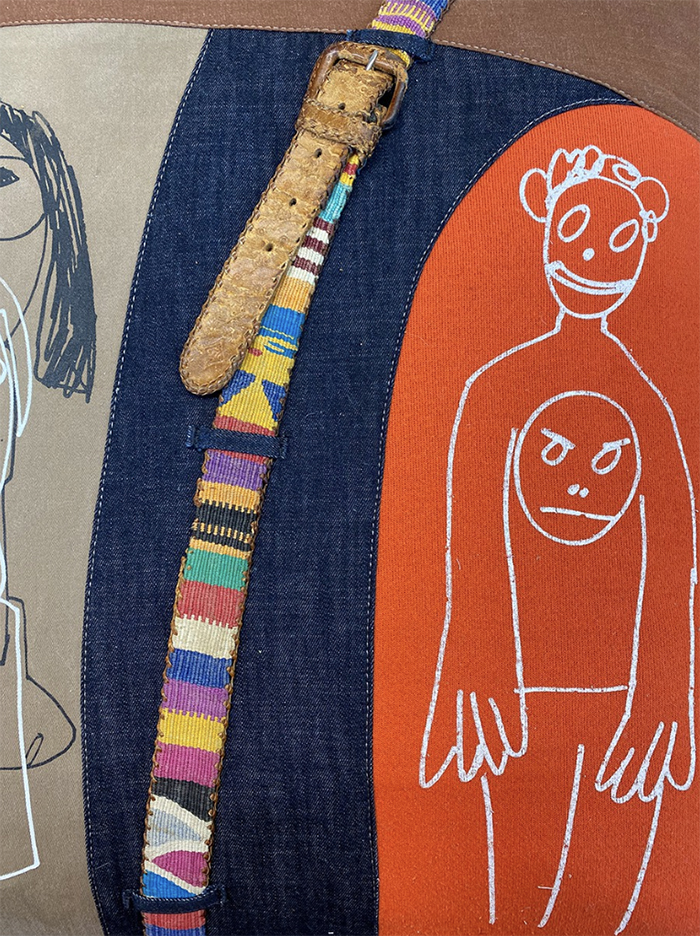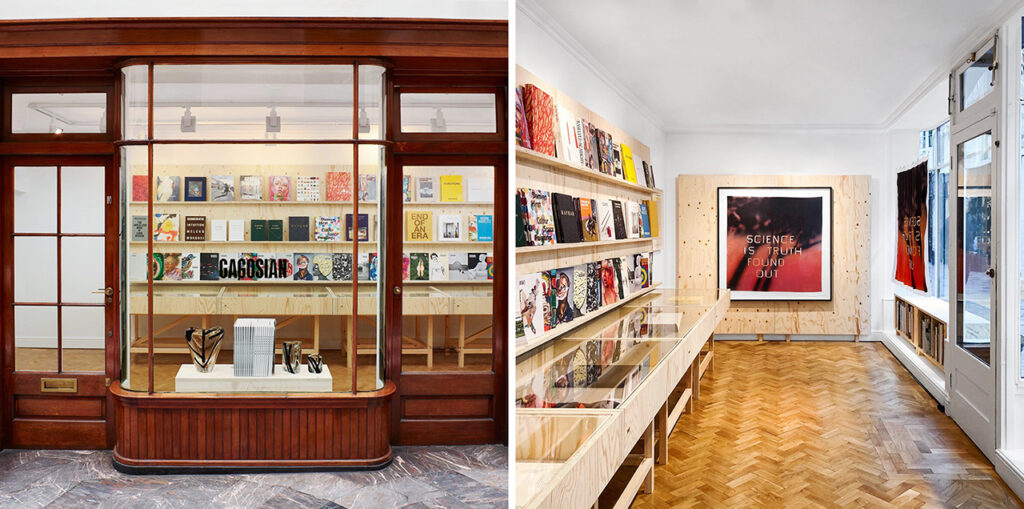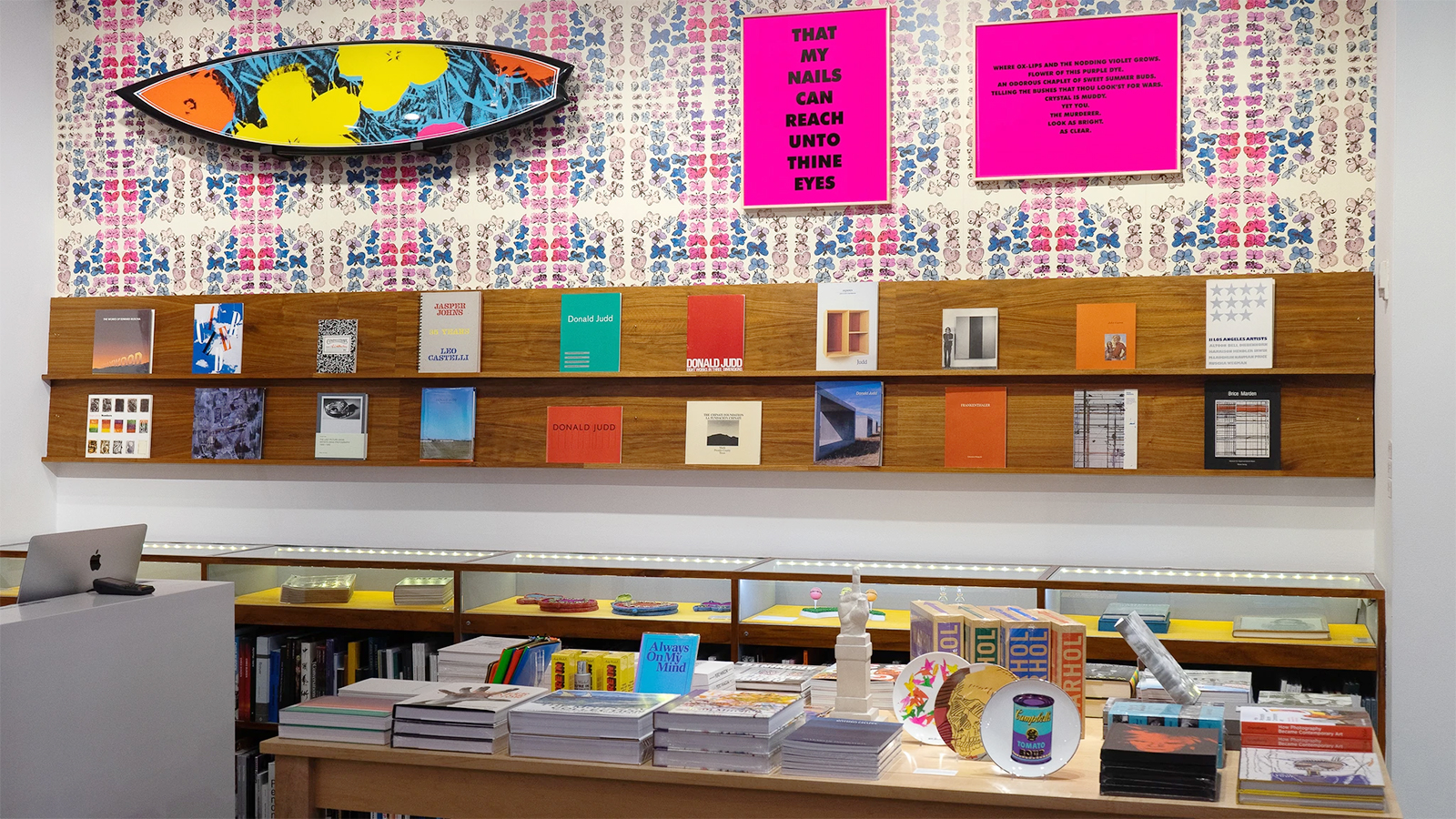On May 10, Gagosian Gallery will showcase over 30 pieces by Richard Prince at its NYC exhibition Richard Prince: Hoods, coinciding with a takeover by the artist of the gallery’s shop in London’s Burlington Arcade. Merchandise includes pieces from Prince and Darren Romanelli collaboration, Katz + Dogg, alongside the artist’s books and posters.

Coinciding with Richard Prince: Hoods at Gagosian New York, the gallery’s London shop will feature an artist takeover, retailing Prince-themed products. Image: Detail of a Katz + Dogg lounge chair / Gagosian
An activation by Gagosian Gallery to entice visitors to its new London shop, the takeover also highlights the gallery’s continued alignment of its retail front with its curatorial direction. The gallery currently operates two retail branches in New York and London, selling a range of goods such as books, art prints aligned with ongoing exhibitions, and accessories including exclusive jewelry created by Gaia Repossi in collaboration with the Robert Mapplethorpe Foundation. “What we offer in our physical spaces is also very much a response to the gallery programming and what is on view,” says Alison McDonald, Gagosian Gallery’s Director of Publications.
Additionally, accessibility is key to the gallery’s retail strategy, offering fine art-related products at friendly prices. “The shop has a vast array of items offered at more accessible price points that allow anyone to live with the art featured at the gallery,” she says. “For example, you can purchase a Brice Marden poster for just $20 or a Richard Prince t-shirt for $30.”
Online, Gagosian Gallery has found similar success with its retail approach. Despite a temporary closure in 2020, the online shop, which has its own Instagram account with 23.5K followers, was relaunched in 2021 to a warm reception. “We clearly had an audience waiting for its return, as we did more business in three months than in a full calendar year,” she says. “The shops, in all of their forms, provide a way for the gallery to engage with established and new collectors outside of our regular exhibition programming.”
With a market value of $15 billion in 2021, museum and gallery retail has become a key revenue stream for cultural institutions and a means to attract visitors back into their venues. And as McDonald shares below, Gagosian Gallery has been mindful of how its retail front can additionally serve as an extension of its brand.
What goes into Gagosian Gallery’s retail experience?
We thoughtfully curate our shops – a lot of time and effort goes into creating a unique space that changes frequently, inspiring people to want to come back often to check out what is new and different.
How do you curate items that both align with the institution’s collection, while standing alone as cool retail objects?
We’re fortunate enough to work with wonderfully creative artists who use our shops as another platform for their craft — the gallery harnesses their ideas into material objects that can then be enjoyed by the public.

Gagosian Gallery’s newly opened London store sells artist’s prints, posters, rare books, and apparel, with an upstairs gallery showcasing a small rotation of exhibitions. Images: @shopgagosian on Instagram
How do you turn the physical retail space into an extension of the institution itself?
Our physical retail spaces and our galleries are aesthetically aligned in design. In fact, the shop we recently opened in the historic Burlington Arcade in London was designed by Caruso St John Architects, the Stirling Prize–winning architecture firm who we collaborated with on our gallery locations in London, Rome and Paris.
Is the gallery planning anything tech-related for the near future?
We are gearing up to open a major exhibition of new works by Takashi Murakami next week in New York. ‘An Arrow through History’ will incorporate the gallery’s first use of virtual reality, featuring a digital rendering of our Madison Avenue galleries. The immersive viewing experience will allow us, for the first time ever, to welcome visitors from all over the world.
Might NFTs be in the gallery shop’s future?
I cannot share anything concrete at this time, but I can say that we have been having conversations with our artists about their interest in this space and are open to exploring the myriad possibilities it presents. The gallery also recently announced that we now accept cryptocurrency, which extends to our shop for a small subset of products.



